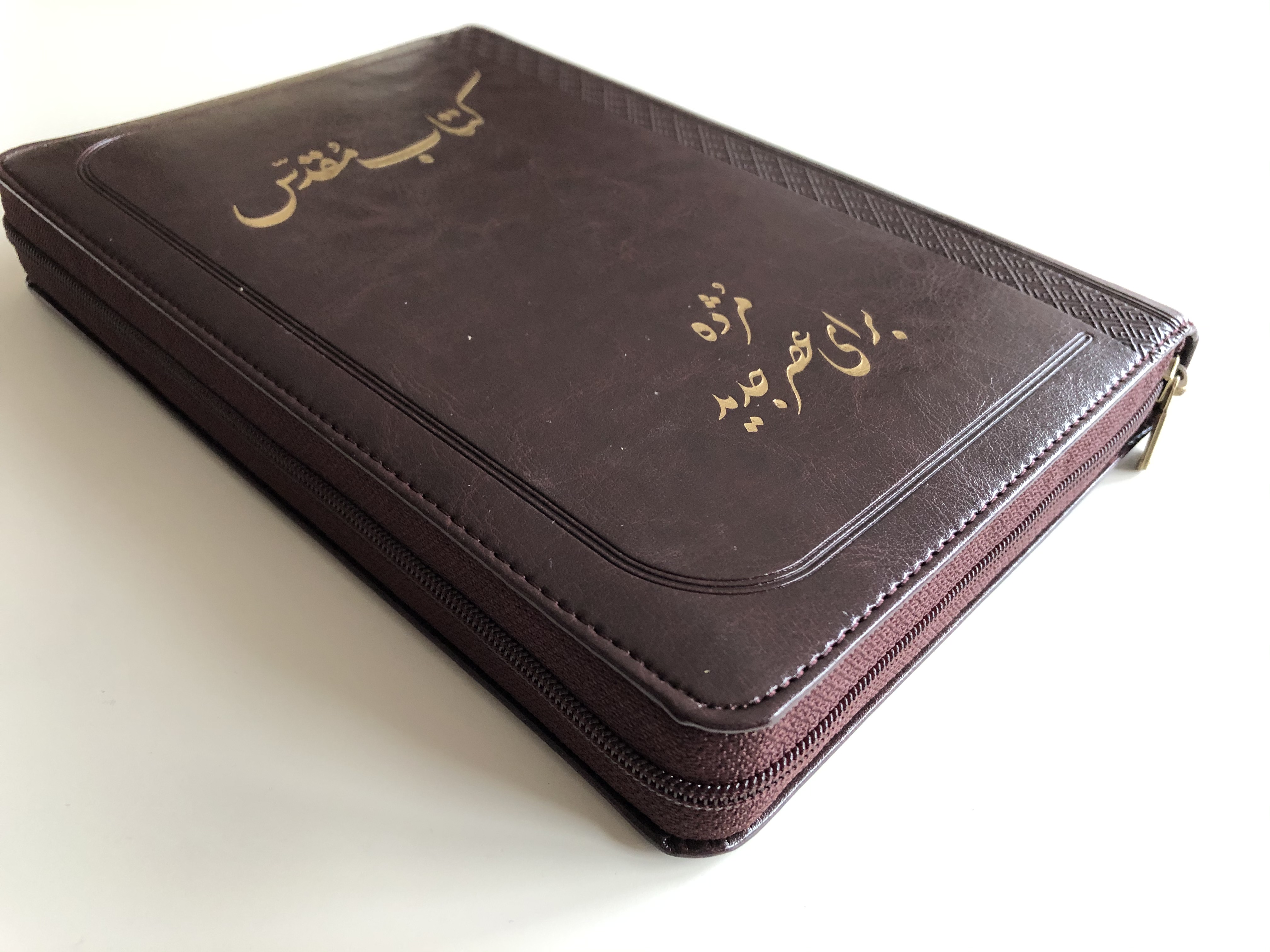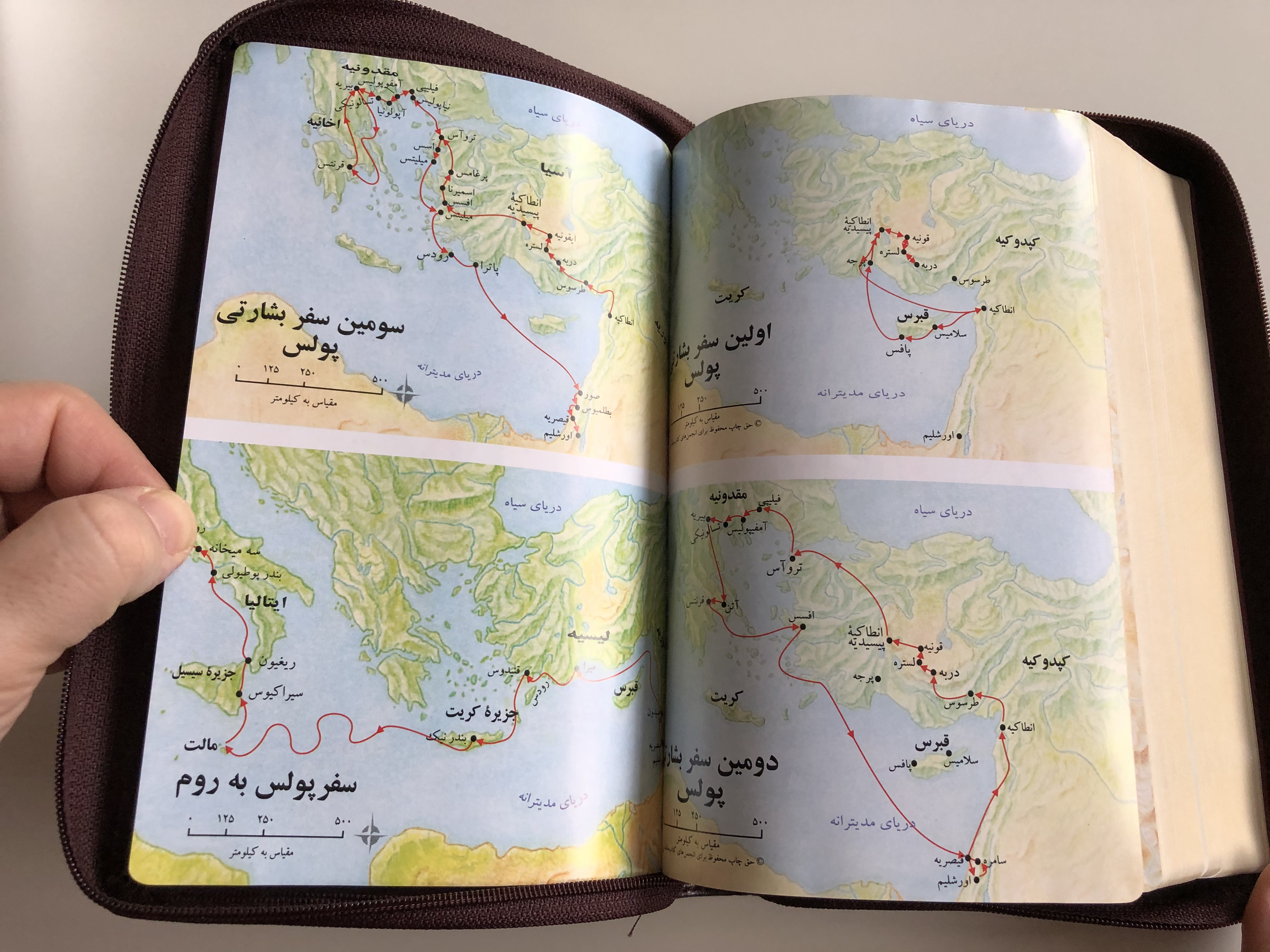Description
Farsi Holy Bible Luxury Edition / Today's Persian Version
United Bible Societies 2016 / Leather bound, Golden edges, zipper / Great gift for Iranians
Product Features
- Binding: Leather bound with golden edges and zipper
- Edition: Luxury Edition, Today's Persian Version
- Publisher: United Bible Societies / Korean Bible Society
- Publication Year: 2016
- ISBN-13: 9788941295426 / 978-8941295426
- ISBN-10: 8941295424
- Pages: 1480
- Language: Persian (Farsi)
Overview
The "Farsi Holy Bible Luxury Edition" is a beautifully crafted Persian translation of the Bible, known as Today's Persian Version. Published by the United Bible Societies in collaboration with the Korean Bible Society in 2016, this edition features a luxurious leather binding, golden page edges, and a convenient zipper for added protection. This Bible, with 1480 pages, offers an easy-to-read and understand translation of the scriptures, making it a great gift for Iranians and Persian-speaking individuals.
Ürün Özeti
"Farsi Holy Bible Luxury Edition" Kutsal Kitap'ın Today's Persian Version olarak bilinen Farsça çevirisidir. Birleşik Kutsal Kitap Dernekleri ve Kore Kutsal Kitap Derneği işbirliğiyle 2016 yılında yayımlanan bu baskı, lüks deri cilt, altın sayfa kenarları ve ek koruma için pratik bir fermuar sunar. 1480 sayfalık bu İncil, kutsal metinlerin kolayca okunup anlaşılabilen bir çevirisini sunar, bu da onu İranlılar ve Farsça konuşan bireyler için harika bir hediye yapar.
Interesting Facts
- Modern Persian Translation: This version, completed in 2009, is a modern scholarly translation of the original Greek and Hebrew texts, ensuring accuracy and clarity.
- Historical Significance: Persian, an ancient language spoken by over sixty million people, has a rich Christian history dating back to the early converts at Pentecost as mentioned in Acts 2:9.
- Luxury Features: The leather binding with golden edges and a zipper not only provides durability but also adds a touch of elegance, making it suitable for gifting.
İlginç Bilgiler
- Modern Farsça Çeviri: 2009 yılında tamamlanan bu versiyon, orijinal Yunanca ve İbranice metinlerin modern akademik bir çevirisidir, doğruluğu ve netliği sağlar.
- Tarihsel Önemi: Farsça, altmış milyondan fazla insan tarafından konuşulan antik bir dil olup, Elçilerin İşleri 2:9'da bahsedilen Pentekost'taki ilk Hristiyan dönüştürücülerinden itibaren zengin bir Hristiyan tarihine sahiptir.
- Lüks Özellikler: Deri cilt, altın kenarları ve fermuar, dayanıklılığı sağlarken aynı zamanda zarif bir dokunuş katar, bu da onu hediye vermek için uygun hale getirir.
Publishers
- United Bible Societies / Korean Bible Society: Esteemed organizations dedicated to translating, publishing, and distributing the Bible in various languages to support religious education and interfaith understanding.
Yayınevi
- Birleşik Kutsal Kitap Dernekleri / Kore Kutsal Kitap Derneği: Kutsal Kitap'ı çeşitli dillerde tercüme etmek, yayımlamak ve dağıtmakla meşgul olan, dini eğitimi ve dinler arası anlayışı desteklemeye kendini adamış saygın organizasyonlardır.
Hashtags
#FarsiHolyBible #TodaysPersianVersion #LuxuryBible #UnitedBibleSocieties #KoreanBibleSociety #PersianBible #LeatherBoundBible #GoldenEdges #BuyOnline #ChristianFaith
Etiketler
#FarsçaKutsalKitap #GünümüzFarsçaVersiyonu #Lüksİncil #BirleşikKutsalKitapDernekleri #KoreKutsalKitapDerneği #Farsçaİncil #DeriKapakİncil #AltınKenarlar #OnlineSatınAl #Hristiyanİmanı
























































![Persian Children's Bible / Today's Persian Version - Farsi Language [Hardcover] Persian Children's Bible / Today's Persian Version - Farsi Language [Hardcover]](https://cdn11.bigcommerce.com/s-62bdpkt7pb/images/stencil/600x600/products/2058/5365/1%2520%25281%2529__72655.1462823262.JPG?c=2)
![Persian Children's Bible / Today's Persian Version - Farsi Language [Hardcover] Persian Children's Bible / Today's Persian Version - Farsi Language [Hardcover]](https://cdn11.bigcommerce.com/s-62bdpkt7pb/images/stencil/600x600/products/2058/5414/1%2520%25282%2529__02050.1462823263.JPG?c=2)



![Persian Children's Bible [Hardcover] by United Bible Societies Persian Children's Bible [Hardcover] by United Bible Societies](https://cdn11.bigcommerce.com/s-62bdpkt7pb/images/stencil/600x600/products/455/981/1__32479.1462823128.JPG?c=2)

